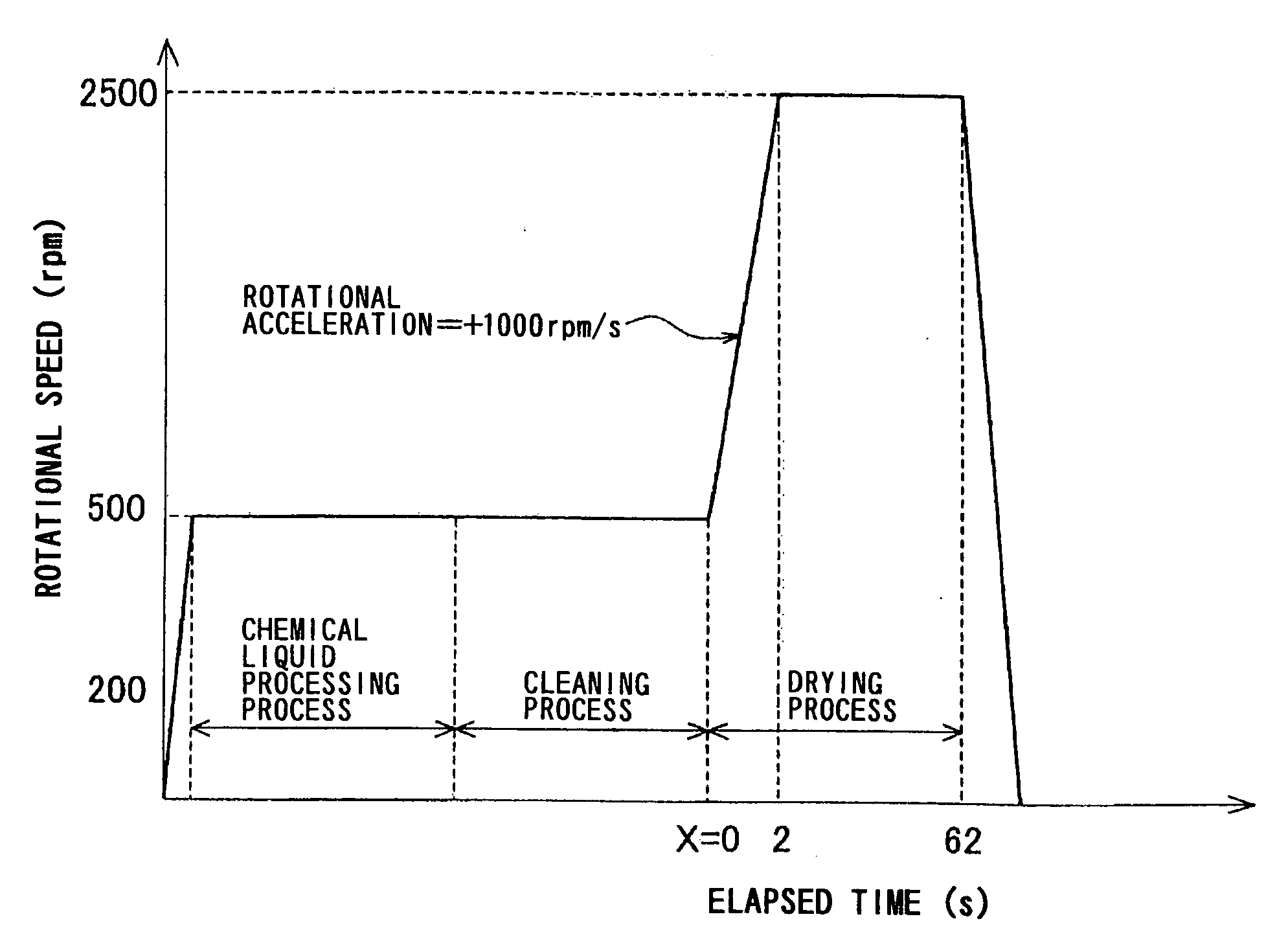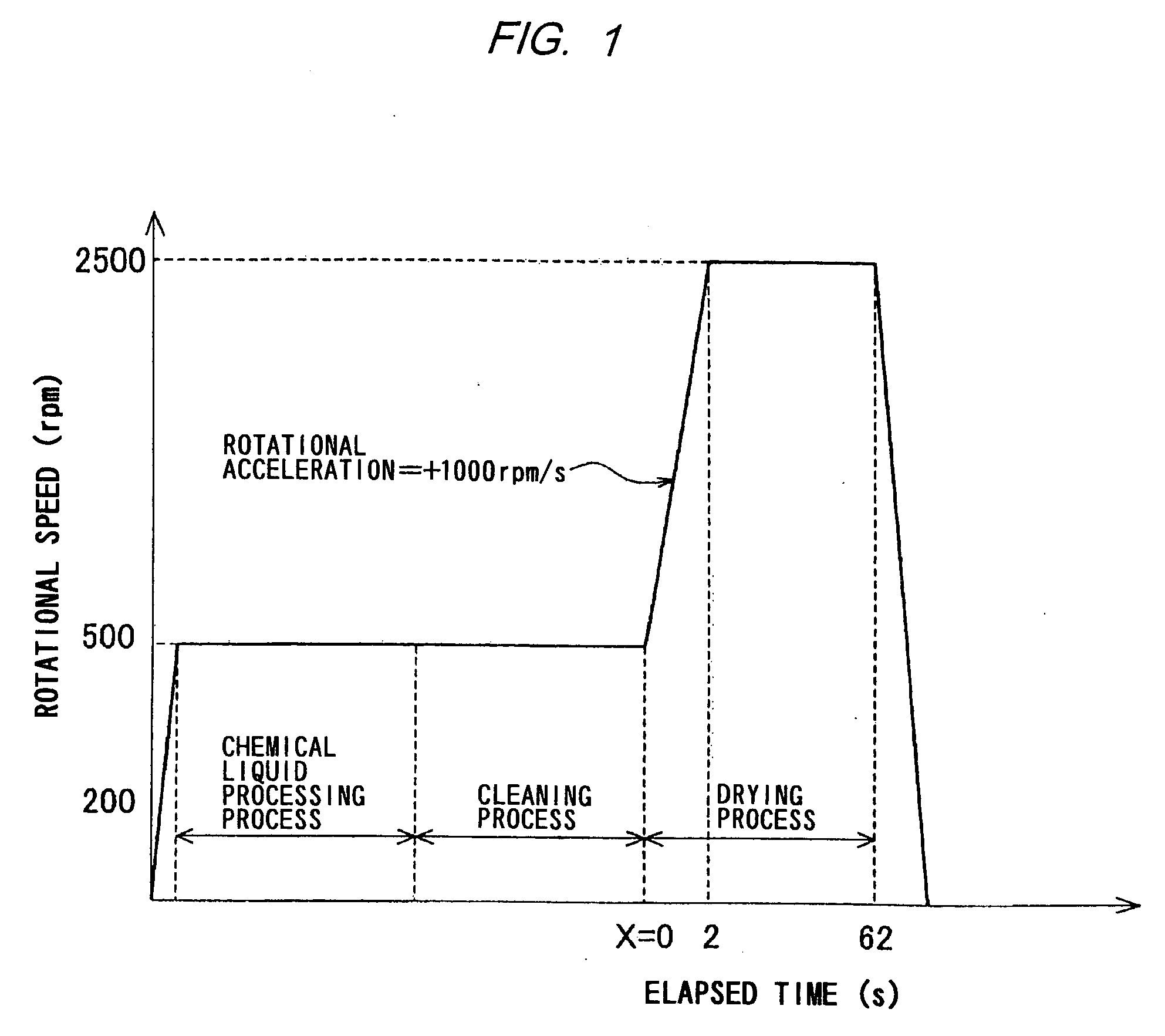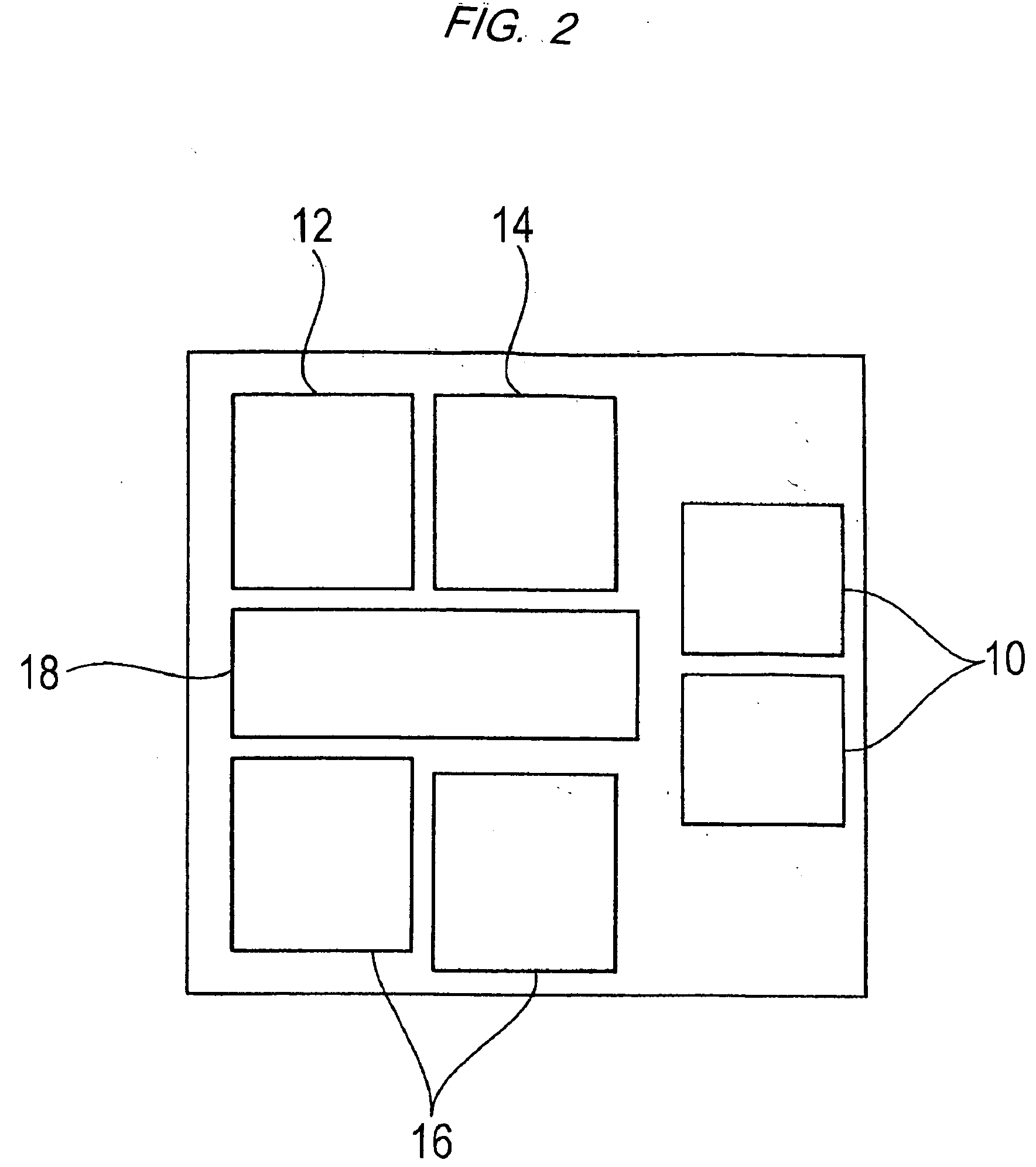Substrate processing apparatus and substrate processing method
a substrate processing and substrate technology, applied in the direction of electrical equipment, semiconductor/solid-state device manufacturing, basic electric elements, etc., can solve the problems of contamination of the processing environment in other processes, inability to prevent water marks, and large number of water marks, so as to suppress the formation of water marks and increase the rotational speed of the substrate. , the effect of increasing the rotational speed of the substra
- Summary
- Abstract
- Description
- Claims
- Application Information
AI Technical Summary
Benefits of technology
Problems solved by technology
Method used
Image
Examples
Embodiment Construction
Embodiments of the present invention will hereinafter be described with reference to the drawings.
FIG. 2 is a view showing a planar layout of a substrate processing apparatus (system) according to an embodiment of the present invention. As shown in FIG. 2, the substrate processing system comprises two loading / unloading units 10 for placing thereon substrate cassettes housing substrates which each have a thin film deposited on its surface by, for example, sputtering, CVD, or plating, a polishing apparatus 12 for polishing away an unnecessary thin film deposited on or adhering to a bevel or edge portion of a substrate on which a thin film is formed, an etching apparatus 14 for etching away a thin film that remains on the bevel or edge portion of the substrate polished by the polishing apparatus 12, and cleaning / drying apparatuses 16 for cleaning and drying the substrate where the thin film on the bevel or edge portion thereof has been etched away by the etching apparatus 14. The sub...
PUM
| Property | Measurement | Unit |
|---|---|---|
| temperature | aaaaa | aaaaa |
| humidity | aaaaa | aaaaa |
| diameter | aaaaa | aaaaa |
Abstract
Description
Claims
Application Information
 Login to View More
Login to View More - R&D
- Intellectual Property
- Life Sciences
- Materials
- Tech Scout
- Unparalleled Data Quality
- Higher Quality Content
- 60% Fewer Hallucinations
Browse by: Latest US Patents, China's latest patents, Technical Efficacy Thesaurus, Application Domain, Technology Topic, Popular Technical Reports.
© 2025 PatSnap. All rights reserved.Legal|Privacy policy|Modern Slavery Act Transparency Statement|Sitemap|About US| Contact US: help@patsnap.com



